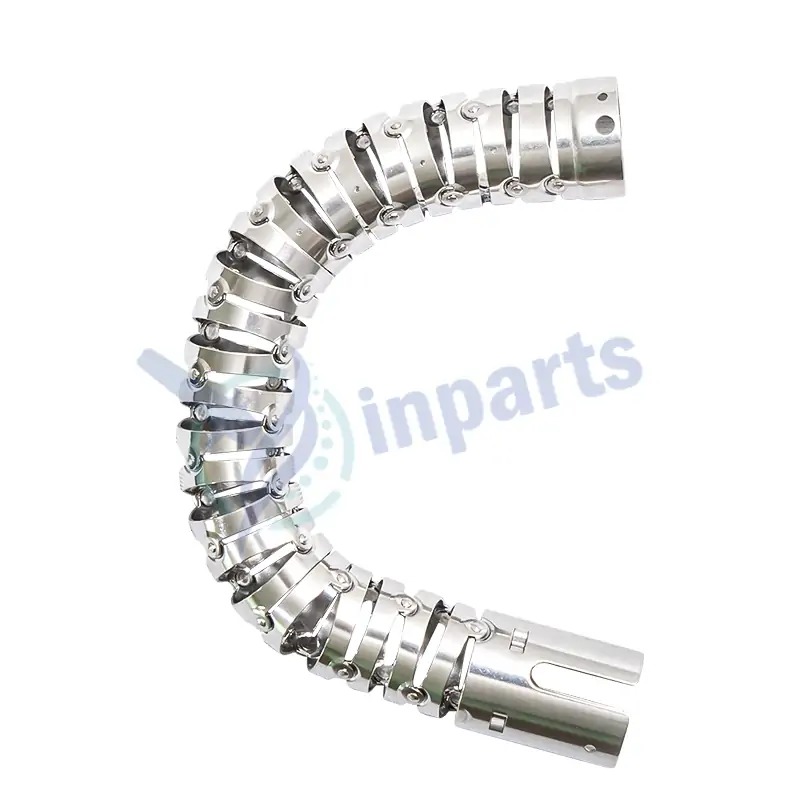The biopsy channel endoscope is a vital tool in modern medicine, especially in the realm of minimally invasive procedures. It allows medical professionals to conduct thorough examinations and obtain tissue samples from the body. This essential function is made possible through an innovative bending section design that enhances the flexibility and maneuverability of the endoscope, ensuring that healthcare providers can reach difficult areas with precision and ease.
What Is a Biopsy Channel Endoscope?
A biopsy channel endoscope is a specialized instrument used in endoscopic procedures to obtain tissue samples from various organs, such as the gastrointestinal tract or lungs. The endoscope is equipped with a small channel that allows instruments to pass through, enabling the collection of biopsy samples. This process is crucial for diagnosing diseases, particularly cancer. The bending section of the endoscope plays a significant role in facilitating this procedure by allowing the device to navigate complex anatomical structures while providing high-definition visuals.
Innovations in Bending Section Technology
The bending section of an endoscope is designed to provide flexibility while maintaining control during procedures. Recent innovations in bending section technology have significantly improved the functionality of biopsy channel endoscopes. For instance, the incorporation of advanced materials and designs has enhanced the durability and flexibility of the bending sections, allowing them to bend more easily without compromising their structural integrity.
These advancements not only improve the ability of medical professionals to reach target areas but also contribute to better patient outcomes. A more flexible bending section enables less invasive procedures, reducing recovery time and minimizing discomfort for patients.
Key Features of the Biopsy Channel Endoscope
When discussing the biopsy channel endoscope, several key features stand out. First, the size of the biopsy channel itself is critical. A wider channel allows for the passage of larger biopsy instruments, facilitating more efficient sample collection. Additionally, the quality of the optics in the endoscope, particularly in the bending section, is crucial for providing clear images during procedures. Innovations in lens technology have improved visualization, enabling better diagnosis and treatment planning.
Moreover, the ergonomic design of the bending section contributes to the ease of use for medical professionals. A well-designed bending section reduces the strain on the clinician during procedures, leading to more accurate and efficient operations.
The Importance of High-Quality Materials in Endoscope Design
The materials used in the construction of the biopsy channel endoscope, particularly in the bending section, significantly impact its performance. High-quality materials offer improved flexibility and strength, allowing the endoscope to navigate through challenging anatomical pathways. Additionally, these materials enhance the durability of the endoscope, ensuring that it can withstand repeated use in various clinical settings.
Innovative coatings on the bending sections also play a role in reducing friction and improving maneuverability. This is essential for procedures requiring intricate movements and precision, as it allows healthcare providers to operate more effectively.
Future Trends in Biopsy Channel Endoscope Development
Looking ahead, several trends are shaping the future of biopsy channel endoscope design and functionality. For example, the integration of advanced imaging technologies, such as augmented reality, holds promise for enhancing visualization during procedures. This can lead to more accurate diagnoses and better-targeted treatments.
Additionally, there is a growing emphasis on developing endoscopes that can be used in a wider range of applications. For instance, future designs may incorporate specialized bending sections tailored for specific types of procedures, enhancing their versatility in clinical practice.
FAQs
1. What is a biopsy channel endoscope used for?
A biopsy channel endoscope is primarily used to collect tissue samples from various organs for diagnostic purposes, particularly in detecting diseases like cancer.
2. How does the bending section enhance the endoscope’s functionality?
The bending section allows the endoscope to navigate complex anatomical structures, improving access to difficult areas while maintaining a clear line of sight.
3. What materials are commonly used in bending sections?
High-quality materials such as flexible polymers and advanced metals are commonly used to ensure durability and flexibility in bending sections.
4. What advancements are being made in endoscope technology?
Innovations include improved optics, enhanced materials for bending sections, and the integration of imaging technologies like augmented reality for better visualization.
5. How does a biopsy channel affect the procedure?
A wider biopsy channel allows for the use of larger instruments, improving the efficiency of sample collection during procedures.
Conclusion
The innovations in the bending section of the biopsy channel endoscope represent a significant advancement in medical technology. These enhancements not only improve the functionality and versatility of endoscopes but also lead to better patient outcomes through more effective and less invasive procedures. As technology continues to evolve, we can expect even greater advancements in endoscopic design, further transforming the landscape of modern medicine.










